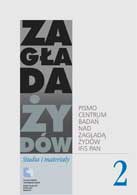Menu
- Main Page
- About us
- Research
- Publications
- Links
- Contact
- Archiwum
- Holocaust. Studies and Materials
the Center's Journal - NIGHT WITHOUT AND END - »FAILED CORRECTION«
- Wybór źródeł
- EHRI PL
News
Programme of Center's academic seminars for winter term 2025
We are pleased to announce the return of our scientific seminar series in less than a month, and warmly invite all interested parties to attend. The seminars will be held on the second or third Wednesday of each month, both in person at the Institute of Philosophy and Sociology of the Polis...
M. Turski Historical Award of Polityka for Justyna Majewska
It is with undisguised pride we report that our colleague Dr. Justyna Majewska has been awarded the Marian Turski POLITYKA Historical Prize for her book debut, "Mury i szczeliny. Przestrzenie getta warszawskiego /Walls and Slits. Spaces of the Warsaw Ghetto". We are very happy and...
Call for Articles - Holocaust Studies and Materials 2026
Call for Articles 2026 Call for Articles Connecting scholarly reflection on the Holocaust to the present - new sources and technologies in research The past decade has seen a breakthrough in Holocaust research, both in terms of the availability of archival sources and the digital ...
Farewell to Marian Turski
It is with profound sorrow that we bid farewell to Marian Turski—a distinguished journalist, historian, and Survivor. An extraordinary man whose voice resonated deeply, he not only shared the lessons of the past but actively championed courage, solidarity, and empathy in the face of evil. ...
Center in EHRI PL consortium
Polish Center for Holocaust Research of the Institute of Philosophy and Sociology of the Polish Academy of Sciences, together with the E. Ringelblum Jewish Historical Institute and the Center for Jewish Studies of the University of Lodz, are creating a national node of the European Holocaust Research Infrastructure within the framework of ERIC
NEWSLETTER
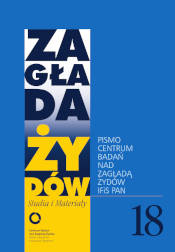 Zagłada Żydów.
Zagłada Żydów.
Studia i Materiały
nr 18, R. 2022
Warszawa 2022
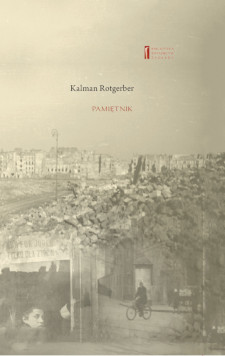 PAMIĘTNIK
PAMIĘTNIK
Kalman Rotgeber
oprac. Aleksandra Bańkowska, wstęp Jacek Leociak
Warszawa 2021
Zagłada Żydów.
Studia i Materiały
nr 17, R. 2021
Warszawa 2021
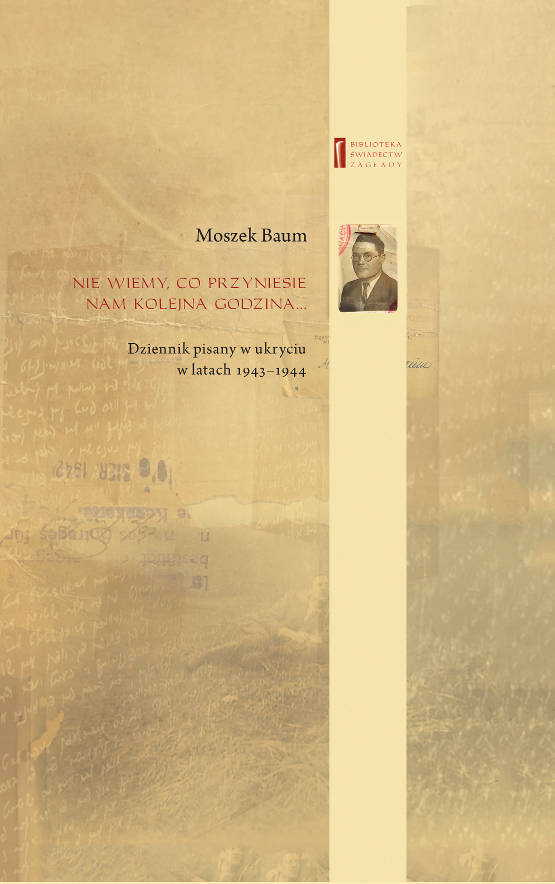 NIE WIEMY CO PRZYNIESIE NAM KOLEJNA GODZINA ...
NIE WIEMY CO PRZYNIESIE NAM KOLEJNA GODZINA ...
Dziennik pisany w ukryciu w latach 1943-1944
Moszek Baum, oprac. Barbara Engelking, tłum. z jidysz Monika Polit
Warszawa 2020
Zagłada Żydów.
Studia i Materiały
nr 16, R. 2020
Warszawa 2020
.jpg) Aryjskiego Żyda wspomnienia, łzy i myśli
Aryjskiego Żyda wspomnienia, łzy i myśli
Zapiski z okupacyjnej Warszawy
Sewek Okonowski, oprac. Marta Janczewska
 PISZĄCY TE SŁOWA JEST PRACOWNIKIEM
PISZĄCY TE SŁOWA JEST PRACOWNIKIEM
GETTOWEJ INSTYTUCJI ...
'z Dziennika' i inne pisma z łódzkiego getta
Józef Zelkowicz, tłum. z jidysz, oprac. i wstęp. Monika Polit
Warszawa 2019
CZYTAJĄC GAZETĘ NIEMIECKĄ ...
Dziennik pisany w ukryciu w Warszawie w latach 1943-1944
Jakub Hochberg, oprac. i wstępem opatrzyła Barbara Engelking
Warszawa 2019
Zagłada Żydów.
Studia i Materiały
nr 15, R. 2019
Warszawa 2019
.jpg) Zagłada Żydów.
Zagłada Żydów.
Studia i Materiały
nr 14, R. 2018
Warszawa 2018
 DALEJ JEST NOC. Losy Żydów w wybranych powiatach okupowanej Polski
DALEJ JEST NOC. Losy Żydów w wybranych powiatach okupowanej Polski
red. i wstęp Barbara Engelking, Jan Grabowski
Warszawa 2018
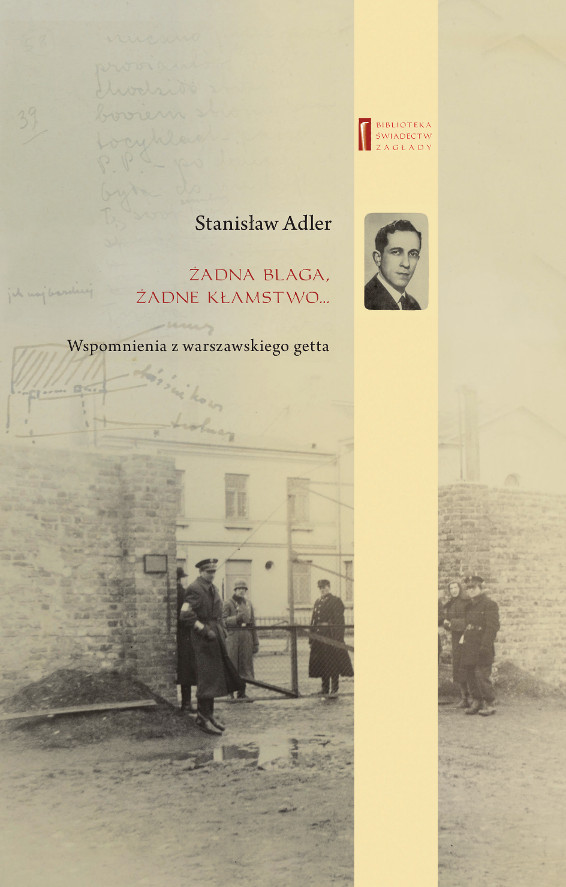 ŻADNA BLAGA, ŻADNE KŁAMSTWO ...
ŻADNA BLAGA, ŻADNE KŁAMSTWO ...
Wspomnienia z warszawskiego getta
Stanisław Adler, oprac. i wstępem opatrzyła Marta Janczewska
Warszawa 2018
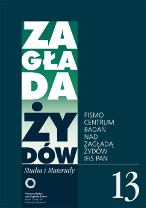 Zagłada Żydów.
Zagłada Żydów.
Studia i Materiały
nr 13, R. 2017
Warszawa 2017
 TYLEŚMY JUŻ PRZESZLI ...
TYLEŚMY JUŻ PRZESZLI ...
Dziennik pisany w bunkrze (Żółkiew 1942-1944)
Clara Kramer, oprac. i wstępem opatrzyła Anna Wylegała
Warszawa 2017
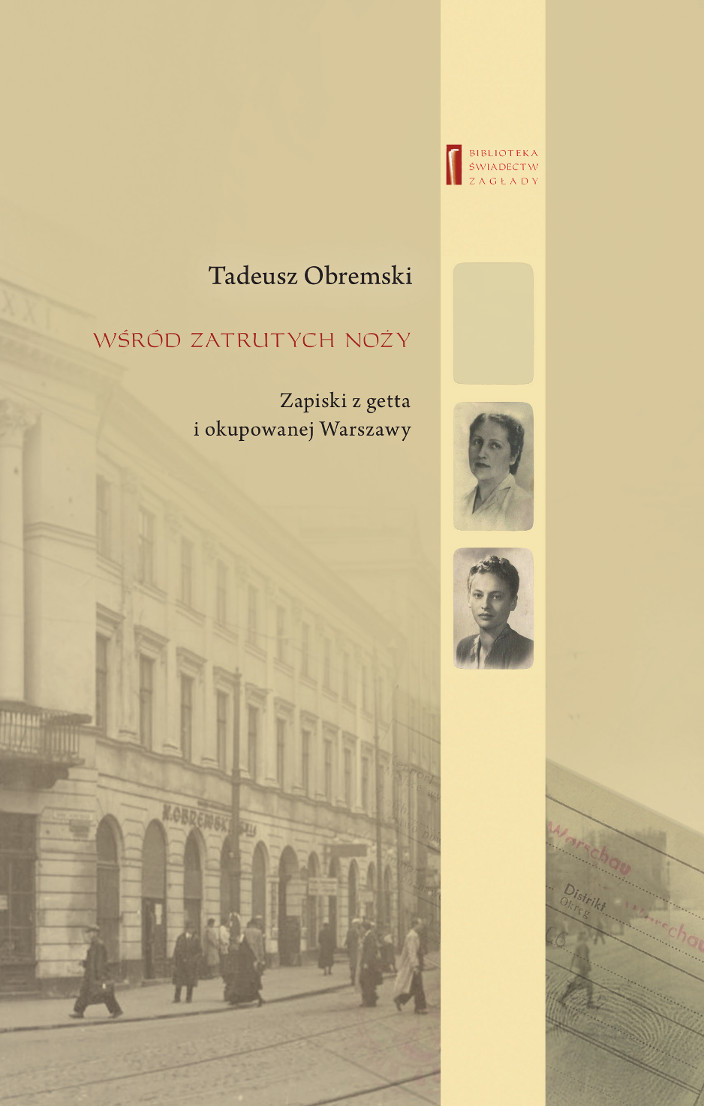 WŚRÓD ZATRUTYCH NOŻY ...
WŚRÓD ZATRUTYCH NOŻY ...
Zapiski z getta i okupowanej Warszawy
Tadeusz Obremski, oprac. i wstępem opatrzyła Agnieszka Haska
Warszawa 2017
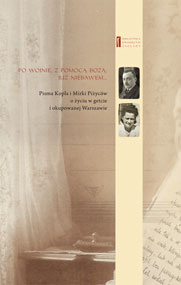 PO WOJNIE, Z POMOCĄ BOŻĄ, JUŻ NIEBAWEM ...
PO WOJNIE, Z POMOCĄ BOŻĄ, JUŻ NIEBAWEM ...
Pisma Kopla i Mirki Piżyców o życiu w getcie i okupowanej Warszawie
oprac. i wstępem opatrzyła Barbara Engelking i Havi Dreifuss
Warszawa 2017
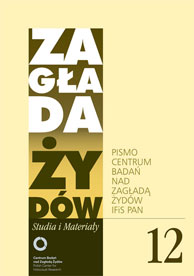 Zagłada Żydów.
Zagłada Żydów.
Studia i Materiały
nr 12, R. 2016
Warszawa 2016
.jpg) SNY CHOCIAŻ MAMY WSPANIAŁE ...
SNY CHOCIAŻ MAMY WSPANIAŁE ...
Okupacyjne dzienniki Żydów z okolic Mińska Mazowieckiego
oprac. i wstępem opatrzyła Barbara Engelking
Warszawa 2016
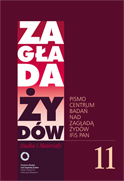 Zagłada Żydów.
Zagłada Żydów.
Studia i Materiały
nr 11, R. 2015
Warszawa 2015
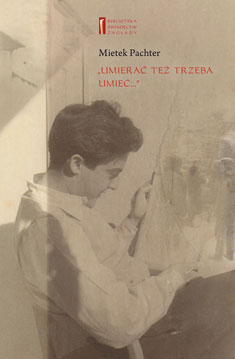 Mietek Pachter
Mietek Pachter
UMIERAĆ TEŻ TRZEBA UMIEĆ ...
oprac. B. Engelking
Warszawa 2015
 Zagłada Żydów.
Zagłada Żydów.
Studia i Materiały
nr 10, t. I-II, R. 2014
Warszawa 2015
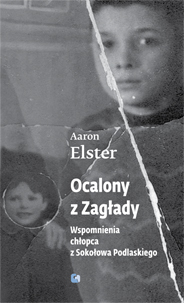 OCALONY Z ZAGŁADY
OCALONY Z ZAGŁADY
Wspomnienia chłopca z Sokołowa Podlaskiego
tłum. Elżbieta Olender-Dmowska
red .B. Engelking i J. Grabowski
Warszawa 2014
 ZAGŁADA ŻYDÓW. STUDIA I MATERIAŁY
ZAGŁADA ŻYDÓW. STUDIA I MATERIAŁY
vol. 9 R. 2013
Pismo Centrum Badań nad Zagładą Żydów IFiS PAN
Warszawa 2013
 ... TĘSKNOTA NACHODZI NAS JAK CIĘŻKA CHOROBA ...
... TĘSKNOTA NACHODZI NAS JAK CIĘŻKA CHOROBA ...
Korespondencja wojenna rodziny Finkelsztejnów, 1939-1941
oprac. i wstępem opatrzyła Ewa Koźmińska-Frejlak
Warszawa 2012
Raul Hilberg
PAMIĘĆ I POLITYKA. Droga historyka Zagłady
tłum. Jerzy Giebułtowski
Warszawa 2012
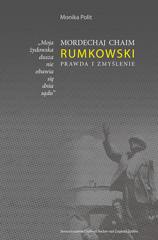 Monika Polit
Monika Polit
"Moja żydowska dusza nie obawia się dnia sądu."
Mordechaj Chaim Rumkowski. Prawda i zmyślenie
Warszawa 2012
.jpg) Dariusz Libionka i Laurence Weinbaum
Dariusz Libionka i Laurence Weinbaum
Bohaterowie, hochsztaplerzy, opisywacze. Wokół Żydowskiego Związku Wojskowego
Warszawa 2011
.jpg) Zagłada Żydów.
Zagłada Żydów.
Studia i Materiały
R. 2011, nr. 7; Warszawa 2011
.jpg) Jan Grabowski
Jan Grabowski
JUDENJAGD. Polowanie na Żydów 1942.1945.
Studium dziejów pewnego powiatu
Warszawa 2011
.jpg) Stanisław Gombiński (Jan Mawult)
Stanisław Gombiński (Jan Mawult)
Wspomnienia policjanta z warszawskiego getta
oprac. i wstęp Marta Janczewska
Warszawa 2010
Holocaust Studies and Materials
Journal of the Polish Center for Holocaust Research
Warssaw 2010
.jpg) Żydów łamiących prawo należy karać śmiercią!
Żydów łamiących prawo należy karać śmiercią!
"Przestępczość" Żydów w Warszawie, 1939-1942
B. Engelking, J. Grabowski
Warszawa 2010
Zagłada Żydów.
Studia i Materiały
R. 2010, nr. 6; Warszawa 2010
Wybór źródeł do nauczania o zagładzie Żydów
Ćwiczenia ze źródłami
red. A. Skibińska, R. Szuchta
Warszawa 2010
.jpg) W Imię Boże!
W Imię Boże!
Cecylia Gruft
oprac. i wstęp Łukasz Biedka
Warszawa 2009
Zagłada Żydów.
Studia i Materiały
R. 2009, nr. 5; Warszawa 2009
.jpg) Żydzi w powstańczej Warszawie
Żydzi w powstańczej Warszawie
Barbara Engelking i Dariusz Libionka
Warszawa 2009
 Reportaże z warszawskiego getta
Reportaże z warszawskiego getta
Perec Opoczyński
Warszawa 2009
 Notatnik
Notatnik
Szmul Rozensztajn
Warszawa 2008
.jpg) Holocaust
Holocaust
Studies and Materials.
English edition
2008, vol. 1; Warsaw 2008
.jpg) Źródła do badań nad zagładą Żydów na okupowanych ziemiach polskich
Źródła do badań nad zagładą Żydów na okupowanych ziemiach polskich
Przewodnik archiwalno-bibliograficzny
Alina Skibińska, wsp. Marta Janczewska, Dariusz Libionka, Witold Mędykowski, Jacek Andrzej Młynarczyk, Jakub Petelewicz, Monika Polit
Warszawa 2007
Zagłada Żydów. Studia i Materiały
R. 2007, nr. 3; Warszawa 2007
Prowincja noc.
Życie i zagłada Żydów w dystrykcie warszawskim
Warszawa 2007
.jpg) Utajone miasto.
Utajone miasto.
Żydzi po 'aryjskiej' stronie Warszawy [1941-1944]
Gunnar S Paulsson
Kraków 2007
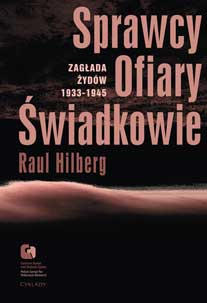 Sprawcy, Ofiary, Świadkowie.
Sprawcy, Ofiary, Świadkowie.
Zagłada Żydów, 1933-1944
Raul Hilberg
Warszawa 2007
Zagłada Żydów. Studia i Materiały
R. 2006, nr. 2; Warszawa 2006
"Jestem Żydem, chcę wejść!".
Hotel Polski w Warszawie, 1943.
Agnieszka Haska
Warszawa 2006
Zagłada Żydów. Studia i Materiały
R. 2005, nr. 1; Warszawa 2005
.jpg) 'Ja tego Żyda znam!'
'Ja tego Żyda znam!'
Szantażowanie Żydów w Warszawie, 1939-1943.
Jan Grabowski
Warszawa 2004
 'Szanowny panie Gistapo!'
'Szanowny panie Gistapo!'
Donosy do władz niemieckich w Warszawie i okolichach, 1940-1941
Barbara Engelking, Warszawa 2003
aaa
 Zagłada Żydów.
Zagłada Żydów.
Studia i Materiały
nr 18, R. 2022
Warszawa 2022
 PAMIĘTNIK
PAMIĘTNIK
Kalman Rotgeber
oprac. Aleksandra Bańkowska, wstęp Jacek Leociak
Warszawa 2021
Zagłada Żydów.
Studia i Materiały
nr 17, R. 2021
Warszawa 2021
 NIE WIEMY CO PRZYNIESIE NAM KOLEJNA GODZINA ...
NIE WIEMY CO PRZYNIESIE NAM KOLEJNA GODZINA ...
Dziennik pisany w ukryciu w latach 1943-1944
Moszek Baum, oprac. Barbara Engelking, tłum. z jidysz Monika Polit
Warszawa 2020
Zagłada Żydów.
Studia i Materiały
nr 16, R. 2020
Warszawa 2020
.jpg) Aryjskiego Żyda wspomnienia, łzy i myśli
Aryjskiego Żyda wspomnienia, łzy i myśli
Zapiski z okupacyjnej Warszawy
Sewek Okonowski, oprac. Marta Janczewska
 PISZĄCY TE SŁOWA JEST PRACOWNIKIEM
PISZĄCY TE SŁOWA JEST PRACOWNIKIEM
GETTOWEJ INSTYTUCJI ...
'z Dziennika' i inne pisma z łódzkiego getta
Józef Zelkowicz, tłum. z jidysz, oprac. i wstęp. Monika Polit
Warszawa 2019
CZYTAJĄC GAZETĘ NIEMIECKĄ ...
Dziennik pisany w ukryciu w Warszawie w latach 1943-1944
Jakub Hochberg, oprac. i wstępem opatrzyła Barbara Engelking
Warszawa 2019
Zagłada Żydów.
Studia i Materiały
nr 15, R. 2019
Warszawa 2019
.jpg) Zagłada Żydów.
Zagłada Żydów.
Studia i Materiały
nr 14, R. 2018
Warszawa 2018
 DALEJ JEST NOC. Losy Żydów w wybranych powiatach okupowanej Polski
DALEJ JEST NOC. Losy Żydów w wybranych powiatach okupowanej Polski
red. i wstęp Barbara Engelking, Jan Grabowski
Warszawa 2018
 ŻADNA BLAGA, ŻADNE KŁAMSTWO ...
ŻADNA BLAGA, ŻADNE KŁAMSTWO ...
Wspomnienia z warszawskiego getta
Stanisław Adler, oprac. i wstępem opatrzyła Marta Janczewska
Warszawa 2018
 Zagłada Żydów.
Zagłada Żydów.
Studia i Materiały
nr 13, R. 2017
Warszawa 2017
 TYLEŚMY JUŻ PRZESZLI ...
TYLEŚMY JUŻ PRZESZLI ...
Dziennik pisany w bunkrze (Żółkiew 1942-1944)
Clara Kramer, oprac. i wstępem opatrzyła Anna Wylegała
Warszawa 2017
 WŚRÓD ZATRUTYCH NOŻY ...
WŚRÓD ZATRUTYCH NOŻY ...
Zapiski z getta i okupowanej Warszawy
Tadeusz Obremski, oprac. i wstępem opatrzyła Agnieszka Haska
Warszawa 2017
 PO WOJNIE, Z POMOCĄ BOŻĄ, JUŻ NIEBAWEM ...
PO WOJNIE, Z POMOCĄ BOŻĄ, JUŻ NIEBAWEM ...
Pisma Kopla i Mirki Piżyców o życiu w getcie i okupowanej Warszawie
oprac. i wstępem opatrzyła Barbara Engelking i Havi Dreifuss
Warszawa 2017
 Zagłada Żydów.
Zagłada Żydów.
Studia i Materiały
nr 12, R. 2016
Warszawa 2016
.jpg) SNY CHOCIAŻ MAMY WSPANIAŁE ...
SNY CHOCIAŻ MAMY WSPANIAŁE ...
Okupacyjne dzienniki Żydów z okolic Mińska Mazowieckiego
oprac. i wstępem opatrzyła Barbara Engelking
Warszawa 2016
 Zagłada Żydów.
Zagłada Żydów.
Studia i Materiały
nr 11, R. 2015
Warszawa 2015
 Mietek Pachter
Mietek Pachter
UMIERAĆ TEŻ TRZEBA UMIEĆ ...
oprac. B. Engelking
Warszawa 2015
 Zagłada Żydów.
Zagłada Żydów.
Studia i Materiały
nr 10, t. I-II, R. 2014
Warszawa 2015
 OCALONY Z ZAGŁADY
OCALONY Z ZAGŁADY
Wspomnienia chłopca z Sokołowa Podlaskiego
tłum. Elżbieta Olender-Dmowska
red .B. Engelking i J. Grabowski
Warszawa 2014
 ZAGŁADA ŻYDÓW. STUDIA I MATERIAŁY
ZAGŁADA ŻYDÓW. STUDIA I MATERIAŁY
vol. 9 R. 2013
Pismo Centrum Badań nad Zagładą Żydów IFiS PAN
Warszawa 2013
 ... TĘSKNOTA NACHODZI NAS JAK CIĘŻKA CHOROBA ...
... TĘSKNOTA NACHODZI NAS JAK CIĘŻKA CHOROBA ...
Korespondencja wojenna rodziny Finkelsztejnów, 1939-1941
oprac. i wstępem opatrzyła Ewa Koźmińska-Frejlak
Warszawa 2012
Raul Hilberg
PAMIĘĆ I POLITYKA. Droga historyka Zagłady
tłum. Jerzy Giebułtowski
Warszawa 2012
 Monika Polit
Monika Polit
"Moja żydowska dusza nie obawia się dnia sądu."
Mordechaj Chaim Rumkowski. Prawda i zmyślenie
Warszawa 2012
.jpg) Dariusz Libionka i Laurence Weinbaum
Dariusz Libionka i Laurence Weinbaum
Bohaterowie, hochsztaplerzy, opisywacze. Wokół Żydowskiego Związku Wojskowego
Warszawa 2011
.jpg) Zagłada Żydów.
Zagłada Żydów.
Studia i Materiały
R. 2011, nr. 7; Warszawa 2011
.jpg) Jan Grabowski
Jan Grabowski
JUDENJAGD. Polowanie na Żydów 1942.1945.
Studium dziejów pewnego powiatu
Warszawa 2011
.jpg) Stanisław Gombiński (Jan Mawult)
Stanisław Gombiński (Jan Mawult)
Wspomnienia policjanta z warszawskiego getta
oprac. i wstęp Marta Janczewska
Warszawa 2010
Holocaust Studies and Materials
Journal of the Polish Center for Holocaust Research
Warssaw 2010
.jpg) Żydów łamiących prawo należy karać śmiercią!
Żydów łamiących prawo należy karać śmiercią!
"Przestępczość" Żydów w Warszawie, 1939-1942
B. Engelking, J. Grabowski
Warszawa 2010
Zagłada Żydów.
Studia i Materiały
R. 2010, nr. 6; Warszawa 2010
Wybór źródeł do nauczania o zagładzie Żydów
Ćwiczenia ze źródłami
red. A. Skibińska, R. Szuchta
Warszawa 2010
.jpg) W Imię Boże!
W Imię Boże!
Cecylia Gruft
oprac. i wstęp Łukasz Biedka
Warszawa 2009
Zagłada Żydów.
Studia i Materiały
R. 2009, nr. 5; Warszawa 2009
.jpg) Żydzi w powstańczej Warszawie
Żydzi w powstańczej Warszawie
Barbara Engelking i Dariusz Libionka
Warszawa 2009
 Reportaże z warszawskiego getta
Reportaże z warszawskiego getta
Perec Opoczyński
Warszawa 2009
 Notatnik
Notatnik
Szmul Rozensztajn
Warszawa 2008
.jpg) Holocaust
Holocaust
Studies and Materials.
English edition
2008, vol. 1; Warsaw 2008
.jpg) Źródła do badań nad zagładą Żydów na okupowanych ziemiach polskich
Źródła do badań nad zagładą Żydów na okupowanych ziemiach polskich
Przewodnik archiwalno-bibliograficzny
Alina Skibińska, wsp. Marta Janczewska, Dariusz Libionka, Witold Mędykowski, Jacek Andrzej Młynarczyk, Jakub Petelewicz, Monika Polit
Warszawa 2007
Zagłada Żydów. Studia i Materiały
R. 2007, nr. 3; Warszawa 2007
Prowincja noc.
Życie i zagłada Żydów w dystrykcie warszawskim
Warszawa 2007
.jpg) Utajone miasto.
Utajone miasto.
Żydzi po 'aryjskiej' stronie Warszawy [1941-1944]
Gunnar S Paulsson
Kraków 2007
 Sprawcy, Ofiary, Świadkowie.
Sprawcy, Ofiary, Świadkowie.
Zagłada Żydów, 1933-1944
Raul Hilberg
Warszawa 2007
Zagłada Żydów. Studia i Materiały
R. 2006, nr. 2; Warszawa 2006
"Jestem Żydem, chcę wejść!".
Hotel Polski w Warszawie, 1943.
Agnieszka Haska
Warszawa 2006
Zagłada Żydów. Studia i Materiały
R. 2005, nr. 1; Warszawa 2005
.jpg) 'Ja tego Żyda znam!'
'Ja tego Żyda znam!'
Szantażowanie Żydów w Warszawie, 1939-1943.
Jan Grabowski
Warszawa 2004
 'Szanowny panie Gistapo!'
'Szanowny panie Gistapo!'
Donosy do władz niemieckich w Warszawie i okolichach, 1940-1941
Barbara Engelking, Warszawa 2003
aaa
Nowy Swiat St. 72, 00-330 Warsaw; POLAND;
Palac Staszica room 120
e-mail: centrum@holocaustresearch.pl
NIGHT WITHOUT END - Failed correctiion - Jean Charles-Szurek
Jean Charles Szurek see in PDF![]()
Centre National de la Recherche Scientifique
centrum@holocaustresearch.pl
Response to the Review
by Tomasz Domański Entitled Correcting the Picture? Reflections on the Sources Used in "Night Without an End. Fate of Jews in Selected Counties of Occupied Poland"”1]
(Polish-Jewish Studies, Institute of National Remembrance [Warsaw, 2019])
For a long time, I have been hesitant to accept the idea that the attack of Dr. Domański needs to be replied at all -- mostly owing to the condescending and contemptuous tone he adopted towards the authors of Night Without an End . For an article of supposed scientific ambitions, his review is laden with derogatory statements. Below please find several blatant examples of such attacks that were deliberately aimed at all of the authors:
Sources [...] speak about it - if one uses them accordingly, and not selectively,” “without scholarly diligence,” “ignorance of the scholarly apparatus,” “source manipulations,” “Is the picture shown one that aimed at scholarly objectivity? No, it is not.
I questioned the value of responding to a criticism that fails to rise to the basic tenets of scholarly discourse, and which, therefore, has no real place in academia. I still question it because I clearly recognize the role in which this, to put it mildly, unusual, 72-page-long article that opens the first issue of “Polish-Jewish Studies” has been cast. Although printed in a scholarly journal published by the Institute of National Remembrance, this is by no means a customary book review aimed at a critical examination of a scholarly work. This is an effort to discredit the authors of the book, based entirely on the fact that the conclusions at which their studies arrived are at odds with those espoused by the current leadership of the Institute of National Remembrance (IPN) and one that is also Dr. Domanski’s employer. There is a thinly-veiled political agenda behind the historical reasoning presented in his review and, for this reason, it needs to be called out for what it is, first and foremost, a political narrative.
It is not the first time that those in power have targeted scholars from the Polish Center for Holocaust Research. In fact, the amendment to the Act on the Institute of National Remembrance passed in 2018 – that allowed for the penalization of scholars who, allegedly, due to their research, were to be guilty of causing harm to the reputation of the Polish nation – was clearly directed at them. Let us not delude ourselves: Dr. Domański is not acting alone. He represents the institution that employs him, and he can, therefore, draw upon the powerful resources of the IPN, i.e. the state administration. That employer sent him to a conference in Paris on February 21-22 of 2019, where, though Dr. Domański was not an invited speaker, a French translation of his paper circulated both during the proceedings themselves and behind the scenes. (Its English version having been made available earlier.) The message he brought with him was troubling. Patrick Boucheron, Professor of Collège de France expressed his serious apprehension during his speech introducing Jan Tomasz Gross, who was invited to deliver a lecture at this prestigious institution:
The shameful parade of professional practitioners of militant ignorance that attends your arrival will not dampen your voice, nor limit its reach. However, it is a kind of warning siren for us, that sounds just in time to remind us that historical discipline should not be confused with a political fight, and that it will remain defenseless if there are no means available to support its proper order of truth in other fora, and in other ways.” (idem, Allocution de bienvenue à M. Jan Tomasz Gross au Collège de France 21 févier 2019 [w:] Les Polonais et la Shoah, une nouvelle école historique, red. Audrey Kichelewski, Judith Lyon-Caen, Jean-Charles Szurek, Annette Wieviorka, Paris: CNRS Éditions, 2019, p. 20)
Therefore, there was no use in responding to the author who intentionally negates the work he is reviewing and, as well, positioning himself as a defender of "Polish honor" – which no one attacks – and who, in the most grotesque way, leverages the “politics of memory” commissioned by the party and the administration. What's more, his tactics are particularly duplicitous: he has cited some (though far from all) of the sources to which the authors refer and overlaid them with a meaning that is aligned with his thesis. How could a layperson have untangled this web to form his own opinion? This malevolent stance is contemptible because a genuine dialogue with the reader who has undertaken the task of reading the 1,700 pages constituting the two volumes of Dalej jest noc would not only have been enlightening, but also very much welcomed. To this end, however, he would have to free himself of ill will.
One of the achievements of the new Polish school of Holocaust research is that it has added a level of complexity to the traditional binary presentation of the attitude of Poles towards Jews during the occupation (with szmalcowniks on one side and the Righteous on the other), and has begun to examine the grey areas. Yes, Night Without an End contributes to the exploration of the condition of the Polish society during that period. No, it does not blame Poles for the crimes committed by Germans. To insinuate, or even directly assert otherwise – which is what Dr. Domański and the heralds of his camp resort to (e.g. the President of the Institute of National Remembrance, Dr. Jarosław Szarek, or journalist Jan Pospieszalski) – completely distorts the meaning of our studies, and, as such, constitutes scientific defamation.
I was not originally willing to respond, but I am doing it now in order to show solidarity with my colleagues who have decided that the scope of this attack requires, in the Polish context, to be responded to.
One should keep in mind that our book is a product of many years of research conducted within the project “Strategies for the survival of Jews during the occupation in the General Government of 1942–1945.” Our research, which was conducted in a more or less uniform manner, and which involved numerous archival sources, was carried out for this particular, and not any other, project. There are many possible topics one might choose to explore: the resistance movement, the life of the peasants under occupation, the underground press, a study of specific towns, etc., but we have chosen this topic. I wish to emphasize this particular issue because one of the tricks in Dr Domański’s bag is to systematically divert readers’ attention and redirect them to various other topics that our project, by its very premise, does not include.
Now, it is time to take a look at the criticism Dr. Domański voices against my study on Łuków County. As my colleagues have already explained the rationale behind the decision to limit the scope of our research to a (pre-war or wartime) county, I will not return to this subject. The principal objective of my study was to identify and describe various types of survival strategies adopted by Jews in rural regions, as well as difficulties they encountered in countryside areas. I have outlined several types of these strategies, primary among them being: 1) hiding with a peasant; 2) hiding in the woods; 3) changing location frequently; 4) alternating between hiding in the woods and with a peasant; 5) joining partisans; 6) adopting an Aryan identity. Taken on their own, these categories are trivial. A less trivial task was, in my opinion, to determine which of these strategies proved most effective from the point of view of the Jews seeking to survive. This task has been accomplished by identifying the strategies adopted by survivors on the one hand, and victims whose lives were taken on the other. My research shows that the survival rate was highest for those who joined a partisan movement, whereas it was considerably lower for those who hid with a peasant. Assuming an Aryan identity proved almost as effective as joining a partisan unit. These are the primary conclusions of my study.
I think that there are two reasons why Dr Domański has overlooked the fundamental assumptions and conclusions of my paper or has not even taken an interest in them. The first is an ideological character of his interpretation of Night Without an End that is fixated on removing from sight (by all and every means) the problem of Polish responsibility. The second is his lack of understanding of the statistics I provide.
Let me repeat, then, what I said at the Paris conference, and what I have always stated: Polish responsibility – which is Polish in the sense that it applies basically to non-Jews – is not central to the process of the extermination of Jews. Does Dr. Domański doubt it to the extent that he must reassure himself of it perpetually? The statistics from Łuków County reveal in detail how this responsibility is distributed among the perpetrators. Nevertheless, from the point of view of those Jews seeking help during the third phase of the Holocaust, the Polish presence was of the utmost importance, and therefore attitudes adopted by Poles must undergo thorough scrutiny. For, at the end, the Jews who managed to escape from trains to Treblinka and sought refuge in the countryside or in the woods, came into the closest, most direct, and most fateful contact with Poles, especially Polish peasants.
I have compiled the statistics on Łuków County by relying upon extant sources, which require adopting a critical approach, and need to be filled in, as all sources do. I do not provide “hard statistics,” for no one can. How else can one compile statistics but by proceeding from the bottom up, collecting information about every single Jew who managed to escape a liquidation action? These statistics are calculated using a small number of cases which – though it bears testimony to the scale of the Holocaust – is too small to be representative of anything but, nevertheless, reveals the major trends, and points out typical incidents. The final finding is that, in all counties, the number of survivors does not exceed 1-2% of the Jewish population in 1942 (before deportations).
So, on what grounds can Dr. Domański make his attack if he ignores the essence of the matter? As usual – he focuses on the alleged transfer of responsibility, the imaginary replacement of German responsibility with Polish responsibility.
Tomasz Domański invokes the topic of village leaders. Indeed, I do examine this topic, because whenever village leaders were dealing with Jews in their villages, the role they played was crucial. Using specific examples, I very clearly depict dilemmata that they faced. I acknowledge that the village leaders were subject to German law. Dr Domański even concedes this: “Notably, the author describes the threat posed by the Germans, acknowledges who created the laws penalizing a part of society for living outside designated areas, who forced village leaders to hand Jews over to the police, who created the atmosphere of terror, and how disobedience of German orders was punished.” (p.17) It still does not prevent Dr. Domański from concluding: “Nevertheless, he transfers responsibility for the fate of the Jews onto Polish society” (ibidem).
This imaginary idea of transferring responsibility, which keeps reemerging like a leitmotif in Dr. Domański’s review, as it does in the writings of all the other ideologists-historians at the Institute of National Remembrance who fight to maintain the "patriotic" line [of reasoning], is patently absurd. I myself am steadfast in acknowledging German responsibility, emphasizing that, from the moment the ghettos were established until they were liquidated, Jews and Germans were face-to-face with one another. As it was in the case of the chairman of the Jewish Council in Łuków, Hersz Lender and the SS-men, who in the Spring of 1924, first ordered him to deliver furs, then – 10 kg of gold. The situation escalated unrelentingly until the great deportation, according to the testimony of an anonymous witness: “Seeing that the Gestapo and the Ukrainians surround the town, we would have some time to seek refuge in hideouts. For weeks we lived in torment, awaiting death that could come at any moment” (see Night Without an End, vol. 1, p. 575). I comment on it as follows: “As one can see, the Łuków Jews were perfectly aware of the noose that was slowly tightening around their necks.” (ibidem). The quotation refers explicitly to the Gestapo and the Ukrainians, not the Poles. The loop was, of course, German.
In Łuków, the main deportation action began on October 5, 1942, and was, for the most part, carried out by German forces (Ordnungspolizei, Reserve Police Battalion 101, gendarmerie) and SS auxiliary troops (composed of Ukrainians, Latvians, and Lithuanians). The Polish police – a body consisting of former officers of the regular pre-war Polish police being now in the service of the repressive policy of the occupiers – also participated in this action. In no way have I questioned German responsibility, as I have stated clearly: "The primary perpetrators of this crime were Germans (SS, Order Police, Gestapo, gendarmerie, etc.) and auxiliary troops (Ukrainians, etc.)” (Ibidem, p. 590).
About what are we talking, then? I am prepared to debate every matter, provided my opponents display no ill will. Dr. Domański makes the assertion that I do not examine other topics, such as the general conditions of peasants, their suffering, compulsory deliveries (kontyngenty), roundups that affected Poles; or that I fail to place the history of Jews in the broader context of the history of the county.
By the same token, he wants me to consider all of the August Decree trials (sierpnówki) from Łuków County, the total number of convicted village leaders, etc. In other words, he calls on me to extend the scope of the research project. This is a ploy enlisted by Dr. Domański again and again. He tries to distract authors from their topic so as to be able to accuse them of various deficiencies that he then paints as major flaws (such as a lack of contextualization, which is not valid, or claims that their reasoning lacks depth. This is a classic method of deception designed to confuse readers who lack expertise in a given area. I have based my study on two specific trials, as they are entirely sufficient to illustrate my typology of the survival strategies. Therefore, any broader statistics of court trials have been of no use to me. Another method to discredit a scholarly paper, which is a classic strategy of sham polemic – a field to which Tomasz Domański takes a particular liking – is to accuse an author of manipulation of sources. To this end then, my critic cites a case of the deportation of Jews from the village of Adamów, insinuating that I have somehow interpreted it in such a way as to prove “my preformulated thesis.” A reader would have to engage in a painstaking examination of my paper, and the sources I have cited therein, in order to identify the maneuver to which Dr Domański resorts here. My paper is structured following a logic that he has refused to acknowledge. Let me reiterate then: In addition to giving a summary of historical knowledge on Łuków County, and more in-depth insight into the conditions of the Jews under the occupation, I examine here survival strategies pursued by the Jews (both the survivors and those who have not survived), illustrating these strategies with examples. For this reason, when I describe how difficult it sometimes was for Jews to place their trust in Poles who surrounded them, I rely upon examples of the hostility they encountered. I give an account of attacks that villagers, armed with sticks, carried out on the Jews who had fled from transports, along with accounts of cases of murder, such as the murder of Sylvia Friedman’s mother that took place in Łuków. And I also quote Rubin Rosenberg, who said: “Jews were denounced by Poles too. They were helping to fight Jews in the woods. It was the liquidation action” (AŻIH, 301/639). Rosenberg’s quotation – which Dr. Domański picks out from my paper – illustrates this very topic. Contrary to Dr. Domański accusation, I do not use it to show how complex the situation in Adamów was, as I have already analyzed this issue earlier, in the section describing the roles that German, Ukrainian and Polish policemen played. Incidentally, Mosze Josef Feigenbaum’s account can also give us an insight into the role of the Polish police in Adamów:
For a long time, the Polish police conducted, in the ghetto, an investigation among Jews from Adamów near Łuków. At first, no one understood why they were so interested in the Adamów Jews. Later, the reason became clear. In the fall of 1942, the Adamów Jews were rounded-up in the square for deportation. The Jews attacked the Polish police, who were responsible for carrying out the deportation, took their weapons away, and escaped into the nearby woods. (Moshe Joseph Feigenbaum, Slaughter in Podlasie. Notes from Holocaust, trans. Marc Zell, [b.m.w.], 1987, p. 106; account given in Yiddish in 1948.)
I am identifying the location of particular topics I have raised in my paper because Dr. Domański seems to hold the mistaken belief that I have leveled certain (imaginary anyway!) accusations “solely at Poles.” When Rubin Rosenberg speaks of the liquidation action, he does not say that the Poles masterminded it, but that they acted within the framework of liquidation. And I do not make reference here to the denunciations of Jews by other Jews, because this information can be found elsewhere in this study. Finally, I am not interested in “assigning blame,” but in understanding, and dilemmata faced by village leaders are among the issues to be understood. After all, there were some leaders who were capable of making a gesture towards Jews. The leader of the village of Celiny, located 9 kilometers from Łuków, overcame his anxiety, and said to Ber Ryczywół: “Run before the firefighters arrive.” Tomasz Domański is not actually interested in the nuances I am trying to explain here. He prefers to label me an “anti-Pole.” As to Rubin Rosenberg, it is worth mentioning that he returned to Adamów soon after the war, but then left immediately on the advice of his Polish friends; he visited the village in 1976 and in the 90s. The barrage of criticism with which Domański has hit me can easily be redirected against his argument. “He hand-picks passages from documents to use them as the foundation for his preformulated thesis.”
In another instance of his dishonesty, Tomasz Domański expresses doubt as to whether I have even read the files in case against Bolesław Przeździak, Jan Markowski, Antoni Walczak, Feliks Walczak, and Stanisław Kamecki. Again, in order to get a complete overview, a reader would need to scrutinize all of the trial files, my study, and the review. And, in a similar vein, Dr. Domański makes no effort to comprehend the logic of my reasoning. In the incriminated fragment, I outline the challenges associated with hiding Jews, resulting from such things as fear of the occupiers, being under an obligation to hand over Jews to the authorities, hostility towards Jews, etc. In this case, I meant to demonstrate that, in the specific village of Krynka, which was subjected to particularly harsh treatment, two peasants, Stanisław Czubaszek, and Stanisław Wilczek, assisted in the escape of three Jews whom Przeździak was detaining, and, by doing so, they put themselves in grave danger. Their behavior was the behavior of the Righteous.
Krynki was located near train tracks, the gang of local collaborators, led by a local policemen, Przeździak, was raging throughout the area, mercilessly hunting down Jews. A post-war court decided that the members of this group had been acting out of fear, and acquitted all of them but Przeździak. What is essential to know is that, toward the end of the war, the AK executed most of the local collaborators. Only Przeździak managed to stay alive. That day, one of the collaborators, who was armed, forced the village leader’s deputy, Jan Markowski, to deliver the Jews, escapees from a death train, to Przeździak. Markowski offloaded the task on two peasants, Stanisław Czubaszek and Stanisław Wilczek, who agreed to take it on out of fear of reprisal. On the way to Przeździak, however, they allowed the Jews to escape, much to the dissatisfaction of the policemen-collaborations who beat Wilczek for it severely. The Jews were subsequently caught and handed over to the German gendarmerie. That a village leader had obeyed German law could have been sufficient to support conviction in some of the August Decree trials, even when witnesses' testimonies were in his favor. However, not in this case. Tomasz Domański accuses me of treating Markowski too harshly because I have written: “Some peasants, including deputy village leader Markowski, followed German orders, also robbing the detained Jews; but two of them [peasants] Stanisław Czubaszek and Stanisław Wilczek, opposed it, and risked letting the Jews go free” (Night Without an End, v. 1, p. 609). Domański argues that I should not have accused Markowski of participation in the manhunt since he was acquitted by the court. However, even if Markowski had not personally participated in the robbery, what I admitted readily, he was indicted because he was, in fact, the one who ordered the search for the Jews.
Finally, while analyzing the survival strategies of those Jews who joined partisan groups, I purportedly – in Dr. Domański’s opinion – failed to clarify the fact that Jewish partisans, especially those active in the Łuków vicinity, were often Communists. As such, they were to pursue the “Soviet policy” that was “hostile to Poland.” He writes: “Szurek ignores the fact that these were often Communist groups, and, by becoming tools of the Soviet – hostile to Poland – policy, they played, in Polish conditions, quite a different role than, for example, the « Resistance» did in France” (p. 64). (It is hard to comprehend the purpose of these disdainful quotation marks placed around the French Resistance. Apparently, Tomasz Domański relegates me at this point to the role of a naive foreigner unable to fully grasp Polish reality.) Retaliatory actions that partisans carried out against peasants, should be, according to Dr. Domański, a matter of multifaceted analysis. It is clear that the topic of Communism has been injected into this debate in order to divert attention from its main subject. None of these Jews who survived among partisans in Łuków County uttered a word about Communism. The author of this review chooses to bring up the issue of Communism in the context of the Jakow Keselberner account that I have quoted. Keselberner did not make mention of “Communist groups” in any of his accounts. In the memorial book of Łuków, however, he recalled a telling comment made by his brother: “Friends from the Jewish partisan movement tried to cooperate with Polish partisans, but they suffered heavy losses, as the latter appeared to be Fascists” (Le Livre de Lukow, Paris 1987, pp. 130–134).
To what end, then, does Domański raise the issue of Communism here? He states: “In fact, Jewish survival groups in the county, taken as a whole, were led by Soviet officer Serafim Aleksiejew, known as «Serafin»” (p. 64). Reading this sentence, one might get the impression that “Jewish groups” were, indeed, involved in implementing Soviet political objectives. Nonetheless, Jankiel Grynblat, the one upon whose testimony Dr. Domański’s argument is based, does not mention anyone’s political affiliations anywhere (AŻIH, 301/4800). Grynblat gives an account of how he joined various partisans groups, and that they consisted of Soviet prisoners of war (who had most likely fled from a camp near the town of Dęblin), Jews, and young Polish fugitives dodging the compulsory construction service, Baudiesnst. The Soviet officer “Serafin” was a prisoner of war as well. According to the author of the account, the partisans were poorly-armed: “The prisoners had broken weapons, bayonets with dents, and rifles from which magazines would fall out with the slightest movement. These weapons served more as a tool of intimidation than of defense” (ibidem).
This heterogeneous partisan group had grown to 120 people. of whom 20 survived. The accounts of the Jewish survivors contain nothing to indicate that, in this particular case, the Jewish partisans were activists enacting the political objectives of the USSR. The presumption that Serafim Aleksiejew was bound by orders from Moscow is baseless, and the claim that those of his Jewish comrades in arms who survived to see the end of war shared his worldview, even more so. Their prime objectives were to fight and to survive (see the accounts of Grynblat and Keselbrener). As far as “Serafin” himself is concerned, one can ask the question whether the “«Serafin» of the year of 1942” fought for the Soviet project, or rather fought against the enemy? With regards to “Serafin,” I wish to refer more inquisitive readers to commendations of him expressed by his ideological adversaries in their recollections.
In these days, people – including former AK members – warmly recall Serafim Aleksiejew, known by the name of “Serafin,” the founder and commander of a real partisan unit of the GL [Gwardia Ludowa, People’s Guard], that operated in the area comprising the border of the Lublin and Podlasie regions, and the Southeastern region of the Warsaw voivodship, that means also in the territory of the sub-district „A.” He went to war against the Germans at twenty-years-old; he was injured during the fight of Baranowicze; taken prisoner, he fled from the transportation, arrived in the Żelechów vicinity, and stayed there with hospitable peasants. In May of 1942, he gathered a group of runaway Soviet prisoners who were hiding in nearby villages and formed a 25 man-strong partisan unit armed, in the beginning, with three rifles and four pistols obtained from farmers. In the fall of that same year, the “Serafin’s” unit became a GL detachment and was named after Jan Kiliński. It had several successful military operations to its credit. In January of 1944, Serafin united with his fellow countrymen: he and his unit joined together the Soviet partisan groupings of Major Głumow, operating in the Parczew forests. Often, however, he would return to where he had begun his struggle: the surrounding of towns of Żelechów, Ryki, and Dęblin.
Aleksiejew did not allow himself to be maneuvered into operations against the Home Army, though pressure was exerted upon him to do so. On the contrary, he maintained good relations with the AK units and bigger formations [placówki]; he often cooperated with them. Notably, he made friends with well-known partisan Wacław “Ostoja” Rejmak, the commander of a strong detachment operating in the Łuków district (adjacent to the “Orlik” area in the north), that was part of the regional inspectorate “Radzyń.” He had an agreement with “Ostoja,” and both parties strictly adhered to its terms. […]
So partisan units of the People’s Guard were diverse, and so were their commanders. But on the whole, the negatives outweighed the positives, at least for sub-district “A.” (Jerzy Ślaski, Żołnierze wyklęci, Warszawa: Oficyna Wydawnicza Rytm, 1996, s. 74–75)
One cannot settle the question of Communism with a stroke of a pen: there were Communists who were fighting primarily for the Communist project, and there were those for whom the fight against Fascism was key. Incidentally, as Dr. Domański seems to find this subject amusing, the same was true of the French resistance (without quotation marks); the Communists within it fought against Hitler’s regime in 1942 and 1943, while in 1944, they also implemented Soviet political objectives (at least those at the top of the Communist hierarchy).
What is the purpose of evoking the subject of Communism while writing about this case, if not to make the story more palatable, and to legitimize the actions that the peasants took against Jewish partisans? As the latter obeyed the orders of the “Soviet officer,” were they not, by that very fact, actual agents of the Muscovite order? In actuality, Dr. Domański employs the passage concerning the Jewish partisans to treat us to his own interpretation. My argument – let me repeat – is based upon statistics that I have prepared, and takes into account some of the partisans to whom the review published by the IPN refers. My argument demonstrates that joining partisans constituted the most effective survival strategy. Dr. Domański adds hastily: “Szurek has omitted many Jewish accounts, even those from the ŻIH, [Żydowski Instytut Historyczny, Jewish Historical Institute], whereby his depiction of survival groups and the partisan movement is far-from-complete and extremely shallow” (p. 64). Yet, he has not identified any of the accounts that he has in mind, nor explained how, or on what basis, they could significantly fill in my argument. There were, of course, Jewish Communists in the Łuków vicinity – Dr. Domański mentions them, and Krzysztof Czubaszek lists most of them in his book Żydzi Łukowa i okolic (Warszawa: Danmar, 2008). But as far as they are concerned, I need to strongly emphasize that it was their commitment to Communism that encouraged them to take up their relentless struggle against Nazism. To put it another way, the glaring inflexibility that is representative of Domański's review also affects his description of the mechanisms of the Soviet infiltration.
I can agree with Dr. Domański on one issue: interactions between peasants and hostile groups (including the AK and common criminals) were very complicated. Which is all the more reason not to heighten this complexity by adding yet another layer.
As he is obsessed with picking holes in my arguments, Tomasz Domański accuses me of not mentioning the case of Estera Borensztejn in the chapter “Adopting an Aryan identity; changing a surname,” in which I present the strategy of conversion from Judaism (see Night Without an End, vol. 1, pp. 597–600). Had I done so, I could have emphasized the solidarity of the entire village (Osiny) in its effort to save the girl. My anti-Polishness, however, has swayed me to select and relate other examples, the lesser-known and lesser-commendable cases of Irena Krawczyk and Rywka Huberman-Iwan. I have also included the story of Marianna Adameczek with whom, through the academic interest, I have formed a bond of friendship. I recounted these three cases in order to shed light on the difficulties of the process of conversion, and the torment that these girls endured during the course of changing their identities. Note that “[t]he process of changing identity is associated with at least two forms of violence: the initial violence resulting from the change itself, and the long-term stress related to deculturalization (ibidem, s. 598)”. Deculturalization affected Irena Krawczyk and Marianna Adameczek particularly deeply. I do not discuss Estera Borensztejn’s story anywhere in my study. It does not matter! Undaunted by this fact, Dr. Domański fixates on pairing this story with the sentence quoted above, and bombastically sums up his conclusion that: “In this absurd manner, [Szurek] references the fact that the girl was treated by the peasants who were sheltering her as though she were a member of the family, which meant that she participated in all forms of life activities, along with rest of the family” (p. 49). This statement is dishonest. Deculturalization may often be the necessary capping stone of a life-saving course of action, but it is painful, especially for a little girl. Irena Krawczyk, who was 12-years-old in 1942, stated in her postwar testimony: “I didn't want to go back to the Jews because I was converted. And also because I didn't like Jews. When a Jew from Serokomla, whom I knew, tried to approach me, I ran away from him because I was ashamed to talk to Jews” (AŻIH, 301/3998). An interviewer from the ŻIH noted that she did not want to learn Hebrew because she found this language repulsive, and she needed to be taken to a Mass. Yes, it – most importantly – saved her life, but it came at a great price. I can recommend an excellent book on this subject, written by Małgorzata Melchior (Zagłada a tożsamość, Warszawa: IFiS PAN, 2004), to Dr. Domański.
In the early 1980s, the phenomenon of negationism emerged in France, which denies that gas chambers existed. Historian Pierre Vidal-Naquet asked at the time: What should be done with people who disseminate such ideas? Of course, I do not intend to place Tomasz Domański’s opinions within the realm of that particular negationism, however, I want to ask the same question: What is to be done with Dr. Domański and the numerous others who think as he does? And I suggest – as Vidal-Naquet’s did while talking about French negativists – that they should be regarded as a phenomenon of society to be placed more within the history of beliefs than the history of the Holocaust.
As for the ill will that the author of the review manifests: it -may be two-dimensional. One dimension may be simple, predisposed to “serving the idea,” the other – a Sartrean dimension which, being a form of deception, disguises an authentic personality, the personality of a researcher. I hope that Dr. Domański has such a researcher personality. And if this is the case, I wish for him to rediscover it.
[1] Tomasz Domański, Korekta obrazu? Refleksje źródłoznawcze wokół książki Dalej jest noc. Losy Żydów w wybranych powiatach okupowanej Polski, https://ipn.gov.pl/pl/aktualnosci/65746,Korekta-obrazu-Refleksje-zrodloznawcze-wokol-ksiazki-Dalej-jest-noc-Losy-Zydow-w.html, access 14 March 2019. As the English translation of this brochure has not been published yet, the page numbers refer to its Polish edition, with the quotations translated by the translator of this review. (translator’s footnote)



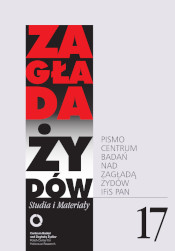

.jpg)
.jpg)


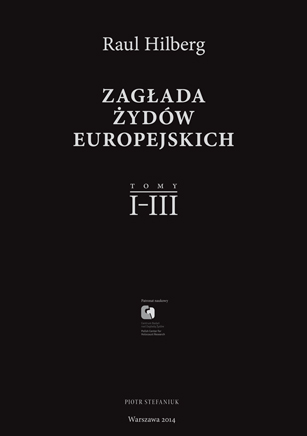
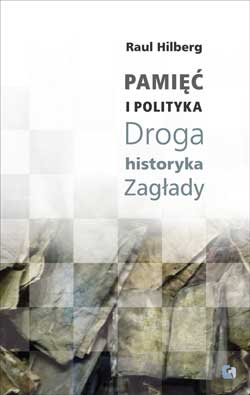
.jpg)
.jpg)
.jpg)
.jpg)
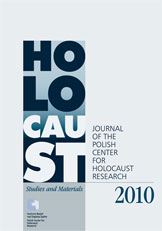

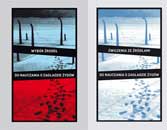
.jpg)
.jpg)
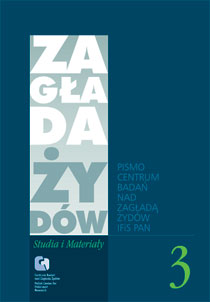
.jpg)
